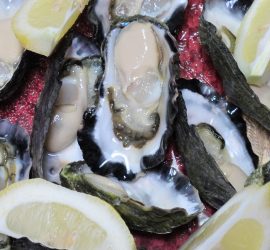Alaska is the model for fisheries management worldwide. Over half of the seafood consumed in the US is from Alaska, and all Alaskan seafood is sustainable. Local, national and international bodies closely monitor and govern the various fisheries, cooperating successfully with fishing communities and commercial organisations and employing a high degree of scientific evidence in support of policy.
All Alaskan seafood is also wild. Although fish farming has proved successful in increasing fish supply, it has also inflicted serious damage to wild fish and their habitat. Fish farms cram hundreds of thousands of fish into mall caged areas, fouling the surrounding water and creating an ideal breeding ground for sea-lice and other parasites. Escaped fish breed with wild stock, corrupting local genetic material and diminishing the natural ability of wild salmon to make their tremendous spawning journeys upriver. The most intensively farmed fish in the world is the Atlantic salmon, and scientific data shows that wild Atlantic salmon numbers have reduced severely in areas where salmon farming occurs. Chinook and coho salmon are also farmed, but not in Alaska. In sharp contrast to the declining stocks in Washington, Oregon and California, Alaskan salmon stocks are healthy and Alaskan salmon is deemed ‘Best Choice’ by the Seafood Watch program.
Halibut and king crab are both under serious threat in other parts of the world. Crab fisheries in Eastern Russia are collapsing due to mismanagement and over-fishing. The Atlantic halibut faces extinction in the wild for the same reason. However, the success of the Alaskan systems are a lesson to others, and governments everywhere are catching up. In Alaska, halibut may only be taken using the bottom longlining, which has little impact on habitat. Elsewhere, work is underway to cut back on the use of bottom trawl and gillnet fishing for species of halibut.

